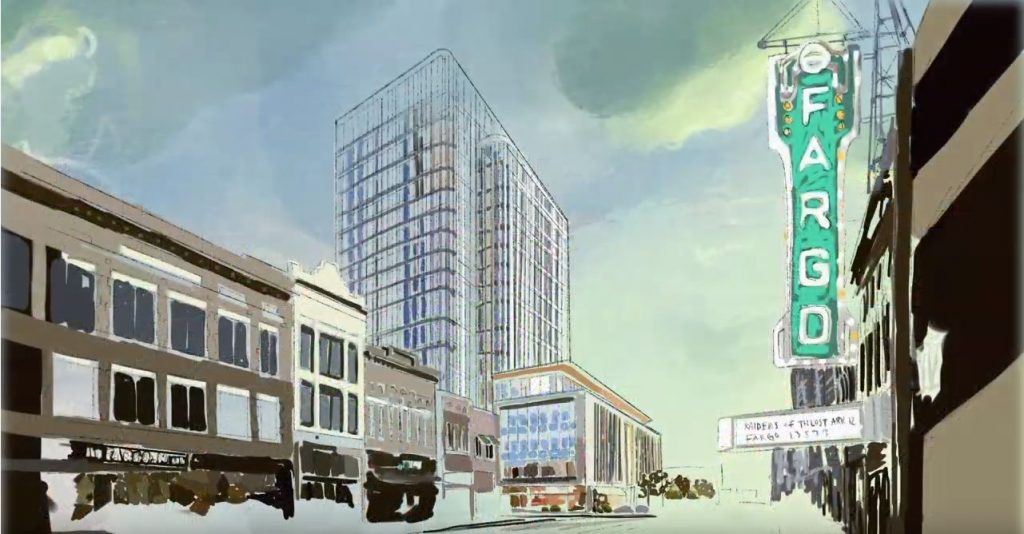
This is Block 9 — a landmark development in the heart of downtown Fargo.
Block 9 has been a surface parking lot since losing a block of mixed-use structures along Broadway to fire in 1976. Through a public-private partnership, this empty slate will transform into a mid-rise, mixed-use tower that adds to a vibrant city core AND the city’s property tax revenues.
Let’s take a closer look at how this partnership works.
The parking lot currently generates $14,000 in annual property taxes. The Block 9 Partners will continue to pay these taxes on the value of the land. When construction ends, Block 9 will not be required to pay property taxes for the 20-year incentive period, rather it will pay 1.2 million dollars to the city per year for infrastructure that benefits both the public and the Block 9 project. That’s 85 times the current taxes!
Block 9 public benefits include a new parking garage for public use on evenings and weekends, and a year-round community plaza, programmed by the Fargo Park District, and expected to draw 300 thousand people into downtown Fargo each year.
Economic development programs of the City of Fargo help make this project possible. Let’s walk through them:
First, Block 9 is in the Renaissance Zone, which provides five years of property tax exemptions to projects inside the zone. When Fargo’s Renaissance Zone was established in 1999, the downtown’s property value was about $150 million. With the completion of the Block 9 tower, downtown’s value will top more than $700 million. That’s good for all Fargo taxpayers.
Second, the project uses the Payment In Lieu of Taxes, or “PILOT”, program. Block 9 retail, office, and hotel will have property tax exemption for years 6 through 20. In lieu of taxes, Block 9 will make a $1.2 million dollar payment to the city for infrastructure on the site which benefits both public and private uses.
The residential condominiums of Block 9, however, are not receiving property tax benefits. Condo residents will pay property taxes starting year one. Those taxes, including the $1.2 million dollar annual payment, will be used to pay off the $15 million in bonds used by the City to finance the parking garage and the community plaza. Not a dollar of taxpayer money is going to Block 9 and there is no risk for the city.
This is possible because Block 9 is in a Tax Increment Financing, or TIF, District. A TIF District is an area inside a boundary in which the taxable value is frozen for a limited time to ensure the city, park district, and schools continue to receive the same amount of taxes from the site each year. As the value of the project grows, new, incremental, taxes are captured by the TIF and used to accomplish goals the city has for public benefits associated with the project. In this case, a parking garage and a community plaza. When the public benefits are paid for, the TIF district ends and taxes are distributed.
Why would a city defer taxes today to incentivize a project like Block 9? There are two main reasons:
The City has seen that, without the use of incentive programs, significant change hasn’t occurred on key downtown sites. This results in declining property values and less than ideal conditions. Incentive programs allow the City to encourage what it wants more of: well-designed, high-quality development that contributes significantly — not only to the tax base — but to the overall quality of life in downtown Fargo.
So what does Fargo get from Block 9?
An 18-story multi-use building that will house condos, retail, a hotel and restaurant, and the new headquarters of R.D. Offutt, which brings over 300 primary sector jobs into the heart of downtown Fargo. A 379-stall garage open to the public on nights and weekends. And a central, year-round community plaza designed to draw thousands of people into the heart of downtown Fargo to experience all this community has to offer.